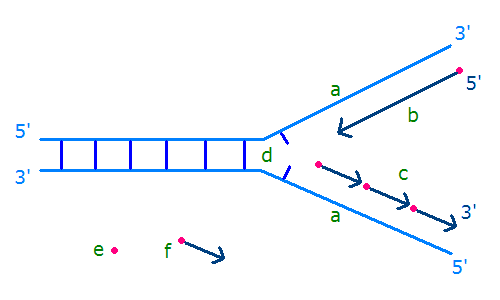-
 Bone density
Bone density
-
 Genetic code
Genetic code
-
 Groin
Groin
-
 Message switching
Message switching
-
 Mangrove swamp
Mangrove swamp
-
 Ascorbic acid
Ascorbic acid
-
 Electronic message service
Electronic message service
-
 Lymphadenopathy
Lymphadenopathy
-
 Disinfectants
Disinfectants
-
 Windscale nuclear power station fire
Windscale nuclear power station fire
-
 Cardia
Cardia
-
 Prostrate shrub
Prostrate shrub
-
 Mucosa
Mucosa
-
 Berne Convention
Berne Convention
-
 Agroenergy
Agroenergy
-
 Mublcom
Mublcom
-
 Interference
Interference
-
 Velocity
Velocity
-
 Embossing
Embossing
-
 Coprostanol
Coprostanol
-
 H.262
H.262
-
 Parthenogenesis
Parthenogenesis
-
 Spintronics
Spintronics
-
 Cross-talk
Cross-talk
-
 DMT
DMT
-
 Subterminal
Subterminal
-
 Charter for the Environment
Charter for the Environment
-
 Sweet chestnut
Sweet chestnut
-
 Efferent
Efferent
-
 Nozzle
Nozzle
Okazaki fragment
The Okazaki fragments, named after their discoverers, are fragments of a discontinuous strand of DNA produced during the chromosomal replication of DNA.
Formation of Okazaki fragments
DNA replication occurs in a pre-determined direction which occurs in the reverse direction in the two strands. In one of the new strands, the replication fork therefore advances in the opposite direction to replication. As a result, replication must be carried out in several stages, each leading to a small fragment of DNA produced: the Okazaki fragment.
As this so-called discontinuous strand is synthesised the DNA primers at the start of the Okazaki fragments are hydrolysed and a DNA ligase enzyme binds the fragments end to end.
 Diagram of a replication fork. The new strands are shown in dark blue. The primers are shown in pink and the arrows on the lower strand show the Okazaki fragments. © Gluon, Wikimedia CC by-nc-sa 3.0
Diagram of a replication fork. The new strands are shown in dark blue. The primers are shown in pink and the arrows on the lower strand show the Okazaki fragments. © Gluon, Wikimedia CC by-nc-sa 3.0
Latest
Fill out my online form.



